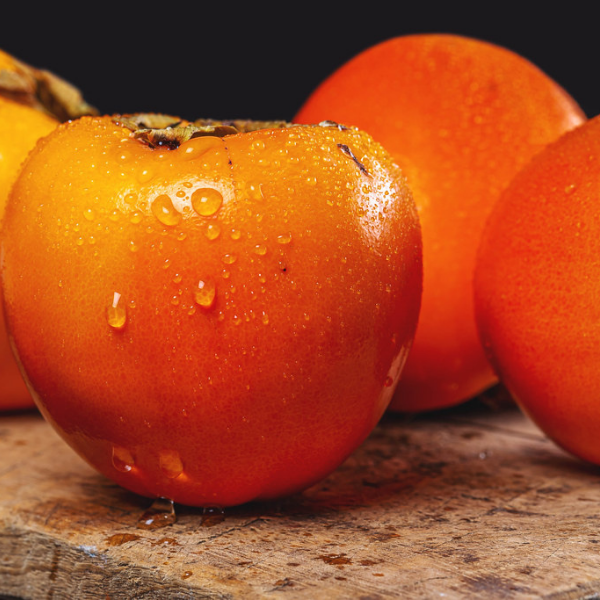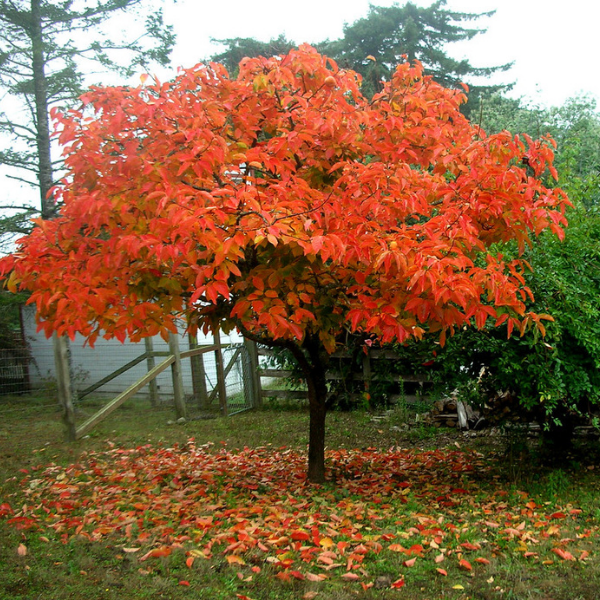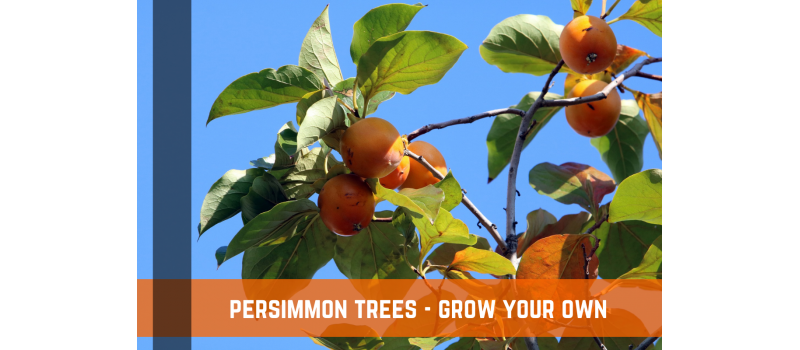There are two types of persimmons: American and Asian. The American variety grows wild in most of the southeast and produces fruit that must mature on the tree before eating; eating an unripe one is unpleasant.
The delicious fruit of Asian persimmons is more regularly grown. Both types of trees are lovely and beneficial to the landscape.
Astringent or non-astringent Asian persimmon types are extensively grown. Astringent Asian types are often acorn-shaped and must be picked ripe from the tree, eaten when soft and sweet like a tomato.
When solid and picked right from the tree, non-astringent kinds can be eaten. They have a flattened form most of the time.
Persimmon Tree Types & Characteristics
American Persimmons
If you pick an american seedling, you will need to plant a second tree to ensure a healthy yield. Also, persimmons from Japan and the United States will not pollinate each other. When mature, American fruit is exceptionally delicate, and its thin skin makes it unsuitable for shipment.
Fruit from all American persimmon trees contains astringent tannins, similar to those found in tea, so don't consume it until it's totally ripe. The fruit will be tender and the skin will be slightly puckered. Ripening takes place between September and October, depending on where the trees are planted.
Because American persimmon trees are the largest of the species, take into account the size of your planting space before purchasing one. Depending on the growth circumstances and pruning, mature size can range from 35' to 50' tall.
Japanese Persimmons
While persimmon trees in the United States grow to be enormous shade trees, the Japanese persimmon is a smaller tree. Persimmons are one of the oldest fruits farmed for commerce and are grown and produced all across Asia.
The Japanese or Asian persimmon is not as hardy as the American persimmon. Asian persimmons are non-astringent and can be stored for several weeks after harvesting. Asian persimmons pollinate themselves. Persimmons, can be eaten as soon as they're ripe.

Persimmon Tree Growing Environment
The American Persimmon is native to the southeast USA. USDA plant hardiness zones 4 through 9 are suitable for persimmon trees. The American persimmon can withstand temperatures as low as -25 degrees Fahrenheit, whereas the Asian persimmon can withstand winter temperatures as low as 0 degrees Fahrenheit. In the United States, the Asian persimmon is commercially grown.
How To Plant Persimmon Trees
Persimmon trees are easy to grow and maintain in the home garden. To begin, dig a hole that is broader than it is deep. After that, select a plant with well-developed roots. To allow for settling, the crown should be somewhat higher than the soil line. Cover with soil.
Mulch can reduce evaporation while also keeping the roots cooler in the heat. If necessary, cover soil around your tree with mulch. Keep any dogs or pets away from your persimmon tree after planting.
The type and amount of trees to plant are significant considerations for individuals learning how to grow persimmon trees. The fruit of the American persimmon tree is produced by both male and female trees, whereas the Asian persimmon tree is self-fruiting.
Consider the Asian persimmon if you have a small garden. Persimmon trees like a pH of 6.5 to 7.5. If you want to plant persimmons, find a sunny location that drains well.
Care & Maintenance
Water & Nutrients
The roots of the persimmon tree are deep yet slow developing, and the tree will require additional irrigation for the first season after planting.
When you first plant your persimmon tree, don't fertilize it. They aren't heavy feeders, and fertilizer can harm their roots. After a few years, when the tree has fruit, a modest application of a fruit tree-specific product in the spring is adequate.
Light
Full light is required for persimmon trees to grow and yield many beautiful fruits. They prefer to be in the sun all day and will struggle in low-light environments.
Make sure persimmon trees aren't shaded by fences or nearby buildings when they're young, or they'll grow stunted. Persimmon trees that are cultivated in low light will fail to yield fruit, or will give fruit that is tiny.
Temperature
Persimmon trees are extremely resilient and may be cultivated in even the coldest of regions. Persimmon trees in the United States can withstand extremely cold temperatures, with temperatures as low as -25 degrees Fahrenheit.
Asian persimmon trees are cold resistant as well, but not as much as American persimmon trees. Asian persimmon trees can withstand temperatures as low as 0 degrees Fahrenheit. If you reside in a colder region and want to cultivate persimmons, the American persimmon tree is the superior choice because it won't die in the winter.
Pruning
Before flowering, prune your persimmon in late winter or early spring. Remove any dead or diseased branches, as well as any branches that are rubbing against each other, first. Then trim all lateral branches back by a third, making a clean, angled cut about a quarter inch from an outward-facing bud.

Harvesting Your Persimmon Tree
Harvesting is possible from September to late November. According to some experts, the fruit will mature completely after the first frost of the season. The hue of the fruit can range from pale yellow-orange to dark orange-red.
When picking persimmons, a shallow tray is recommended, because the fruit can't take much weight, you can wind up crushing the ones at the bottom.
Before astringent varieties may be eaten, they must be extremely soft. You may leave them on the tree to soften, but it's ideal to collect them when they're firm and completely colored. Birds, deer, and other animals that get into trees will be kept at bay.
Non-astringent kinds should be harvested when they have reached their full rich color and are firm. They'll keep ripening on the tree, and letting them soften at room temperature will improve the flavor.
Conclusion
Depending on where you live and your goals, you may pick an American Persimmon or Japanese Persimmon. Both are hardy trees that can survive in the cold.
Follow our tips and you'll have your own persimmon tree before long! Remember that regular care and maintenance of your persimmon is important if you want it to develop fully.

